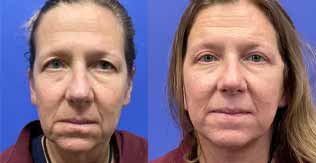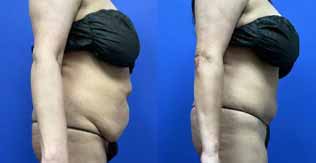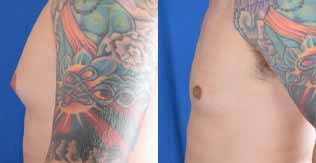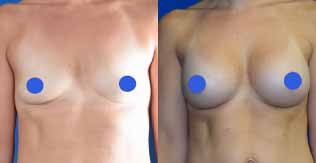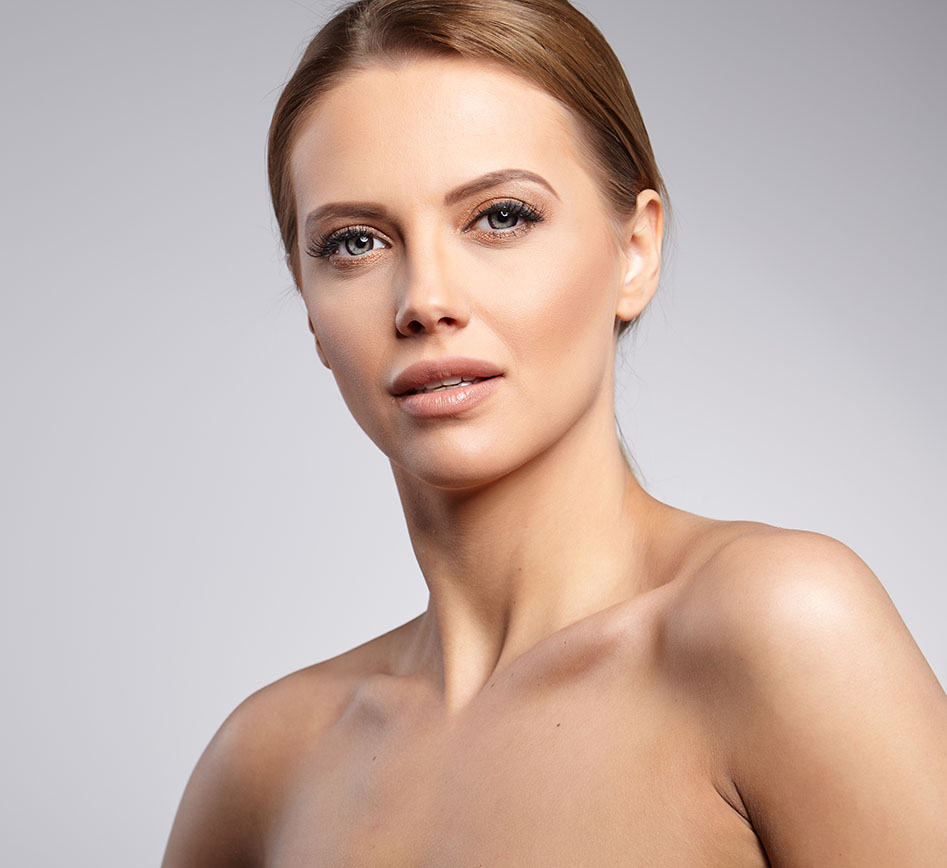Facial Fat Transfer
Offered at our convenient location in Denver
A facial fat transfer adds volume to facial features using the patient’s own fat. Fat is harvested from one area of the body using liposuction, purified, and then re-injected to enhance facial contours. Autologous fat, or fat derived from the patient’s own body, can provide a versatile, durable, and safe filler that is ideal for adding contour and projection to the face. It is also a cost-effective option for restoring volume to aging faces in men and women. Fat transfer can enhance the cheekbones, lips, and under-eye area, smooth out wrinkles and lines and restore volume to areas that have lost fat due to aging. Fat transfer results are often more natural-looking than synthetic fillers and can be performed as an outpatient procedure with minimal downtime.
The best choice for any procedure that utilizes advanced liposuction techniques is the team of liposuction specialists at Millard Plastic Surgery in Englewood and Denver, CO. Our surgeons draw from their impressive knowledge of facial anatomy to restore features that align with youthful proportions. To see what a facial fat transfer can do for you, call (303) 792-5665 for a consultation, or fill out this form, and we will be in touch shortly.
Millard Plastic Surgery offers their patients a look at the procedures they offer on their blog. Check in and back often.
Contents
- 1 About Fat Transfer for the Face
- 2 What are the Benefits of Fat Transfer for the Face?
- 3 Who is the Best Candidate for Facial Fat Transfer?
- 4 Personal Consultation
- 5 Preparing for Facial Fat Transfer
- 6 The Fat Transfer Procedure
- 7 Recovery After Fat Transfer
- 8 The Results
- 9 What is the Cost of Facial Fat Transfer in Denver?
- 10 References
About Fat Transfer for the Face
Fat transfer has recently become popular as people look for long-lasting and minimally invasive ways to improve their looks. In youth, facial fat is abundant, even, and well-distributed. With age, however, the fat becomes imbalanced, with areas of excess and atrophy appearing. These changes mirror the changes in body fat, with increasing fat deposits or hypertrophy in certain areas.
We now know that the face does not age as a single entity but in individual areas, at different rates, and results in multiple signs of visible aging.
The fact is, fixing wrinkles and sagging skin doesn’t always make someone look younger. Aesthetic surgeons now understand that restoring the youthful dimensions of the face is just as important as smooth, firm skin. [1] To truly make someone look younger, the doctor needs to address the thinning of soft tissue that happens as we age. [2] Transferring autologous fat into areas of the face that have become atrophied or gaunt can bring back a youthful balance to the face.
What Areas of the Face Can Fat Transfer Improve?
Fat transfer can improve the face by:
- Filling in wrinkles
- Plumping sunken cheeks
- Enhance the lips
- Augment the chin and cheekbones
- Fill scars caused by injury
- Reduce acne scarring
Fat transfer is also ideal for any area of the body that has lost fat due to aging and can improve the appearance of hands, the body, and breasts.
What are the Benefits of Fat Transfer for the Face?
The benefits of using autologous fat include longer-lasting results compared to synthetic fillers and additionally, fat transfer is a minimally invasive procedure and uses the patient’s fat, eliminating the risk of rejection or allergic reaction. The procedure can also improve the skin’s texture and tone, in addition to restoring volume, and enhancing facial features.
Fat Transfer Offers Natural-Looking Results
Because the fat in the transfer is taken from the patient’s body, the results often look more natural than those achieved with synthetic fillers.
Long-Lasting Results with Autologous Fat Transfer
Fat transfer results can last several years, making it a more long-term solution than other cosmetic treatments.
Facial Fat Transfer is Safe and Low Risk
Fat transfer carries a lower risk of infection and allergic reactions than synthetic fillers, as it uses the patient’s tissue.
Facial fat transfers are typically performed as an outpatient procedure and have minimal downtime, allowing patients to resume normal activities soon after the procedure. It can add volume and contour to various parts of the face and smooth out wrinkles and lines more cost-effectively than repeated treatments with synthetic fillers.
Who is the Best Candidate for Facial Fat Transfer?
The best candidate for a facial fat transfer is typically an individual who is in good health and can safely undergo surgery. Fat transfer is best suited for individuals who have lost some volume in their face but not so much that a surgical facelift is required; individuals who want a subtle enhancement are ideal candidates for autologous fat augmentation. Furthermore, candidates must clearly understand the procedure and have realistic expectations for the results.
Autologous fat transfers are unsafe for some people. Smoking can compromise the healing process and reduce the success of the fat transfer procedure. Patients with underlying health conditions or who are taking certain medications may need special consideration. [3] Also, very thin patients may not have enough fat to use for the transfer. In these instances, we will be happy to recommend an alternative treatment.
Personal Consultation
Before undergoing any procedure, patients should schedule a personal consultation to discuss the procedure’s risks, benefits, and their expectations. Understanding facial aging is essential for the successful use of any filler, especially a long-lasting one like autologous fat, which is why so many patients choose Dr. Millard’s team for their procedure.
After discussing the patient’s health, medical history, and cosmetic goals, Dr. Millard or Dr. Hendrick will decide what parts of the face need to be augmented to look more revitalized and youthful. He will consider your skin quality and the extent of facial volume loss when making his recommendations.
Schedule your consultation in Denver, Englewood, CO, and the surrounding areas. Call (303) 792-5665 or fill out our online contact form.
Preparing for Facial Fat Transfer
Your surgeon may ask you to do certain things to prepare for your procedure. Here is an overview of what you can expect:
- Stop taking certain medications, such as aspirin and anti-inflammatory drugs
- Temporarily quit smoking
- Arrange for transportation
- Take time off of work
- Schedule help with chores and errands if needed
You should also prepare a recovery area in your home where you can rest and recuperate with everything you need on hand. Before your procedure at Millard Plastic Surgery Center, you will receive a complete list of how to best prepare for facial fat transfer.
The Fat Transfer Procedure
During the first phase of a fat transfer, the donor fat is harvested. A local anesthetic is applied, and a small entry site is made, measuring around 1.5-mm. Tumescent fluid is infused into the donor site through a cannula and pumped until the tissue reaches a slightly swollen state. The tumescent fluid consists of saline, epinephrine, and sodium bicarbonate and helps to constrict blood vessels and reduce bleeding during the procedure.
Once the tumescent fluid has taken effect, liposuction is performed. The fat travels through a slender cannula and into a sterile canister to filter. The fat can be taken from areas like the back, thighs, or stomach. The collected fat is transferred to syringes after being centrifuged to remove any blood and tumescent fluid. Finally, the processed fat is injected into the face, and the donor site is dressed in a compression garment.
Recovery After Fat Transfer
Recovery after a fat transfer for the face can vary depending on the individual, but typically, it takes about 1-2 weeks for most patients to return to normal activities. After the procedure, the face may be swollen and bruised, but this usually subsides within a few days. Pain is usually mild and can be managed with over-the-counter pain medication.
The patient should avoid excessive physical activity and exposure to direct sunlight during the initial recovery period. Ice packs can be applied to the treated area to reduce swelling. It is important to follow the aftercare instructions provided to ensure proper healing and optimal results.
The Results
The procedure results are usually visible after several weeks or months as the transferred fat cells settle into their new location and the swelling subsides. After a facial fat transfer, patients can expect a natural-looking boost to the contours of their face without the “done” look. We specialize in balanced, symmetrical, and harmonious improvements with the patient’s natural features.
With an artistic eye and meticulous techniques, Dr. Hendrick and Dr. Millard can help patients achieve a youthful and refreshed appearance.
What is the Cost of Facial Fat Transfer in Denver?
The cost of your procedure will depend on specifics like the amount of fat to be transferred and the areas of your face to be treated. It’s best to schedule a personal consultation for an accurate estimate. It’s important to remember that while a lower price may be tempting, choosing a qualified and experienced plastic surgeon is crucial to ensure safe and satisfactory results.
At Millard Plastic Surgery, we are with you every step of the way, from consultation to recovery. Call (303) 792-5665 to start your journey.
References
- Butterwick KJ, Nootheti PK, Hsu JW, Goldman MP. Autologous Fat Transfer: An In-Depth Look at Varying Concepts and Techniques. Facial Plastic Surgery Clinics. 2007;15(1):99-111. doi:10.1016/j.fsc.2006.10.003
- Fedok F. The Aging Face. Facial Plastic Surgery. 1996;12(02):107-115. doi:10.1055/s-0028-1082402
- DONOFRIO L. Techniques in Facial Fat Grafting. Aesthetic Surgery Journal. 2008;28(6):681-687. doi:10.1016/j.asj.2008.09.003
